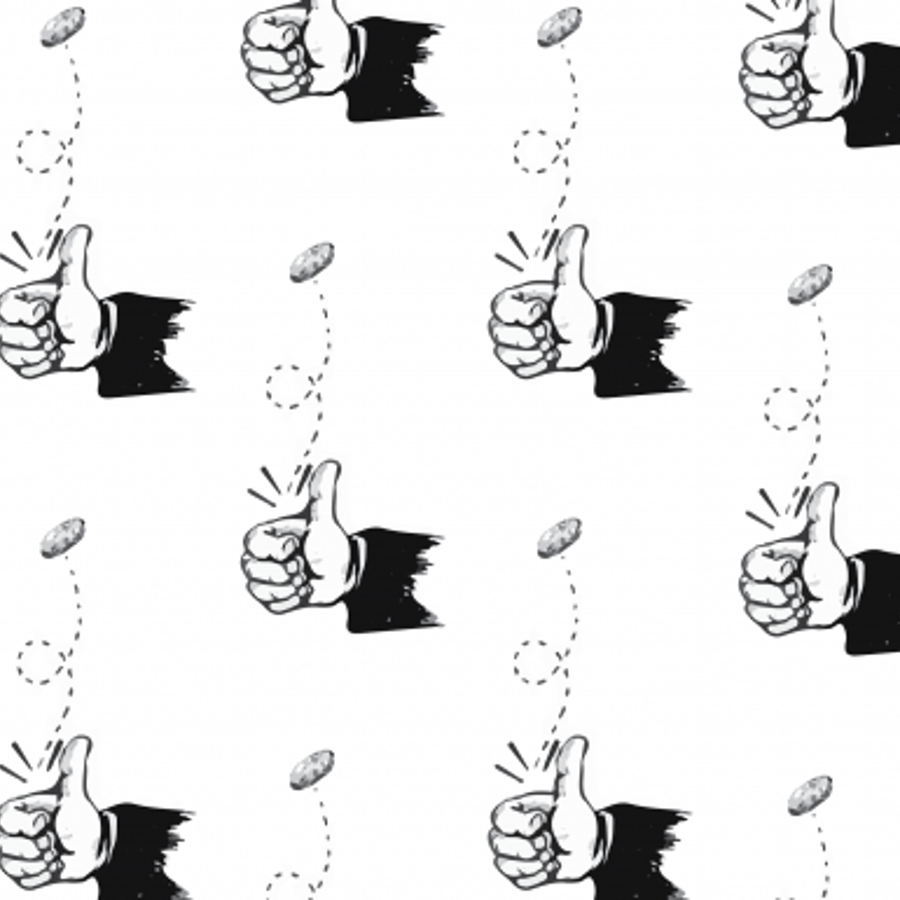
Would a girl share more DNA with her sister, compared to a brother?
July 1, 2009

- Related Topics:
- Meiosis,
- Recombination,
- Relatedness
A curious adult from New Jersey asks:
"Would two sisters (not twins) who have the same parents have more DNA in common than would a sister and a brother (not twins) who have the same parents?"
Two sisters would most likely share more DNA than a brother and sister. Especially if we include the chromosome that makes a person into a male -- the Y chromosome.
But we're going to ignore the Y in our discussion. Why? Because it is a tiny thing that has only a few genes. The only real differences it contributes to are those that make a boy different from a girl.
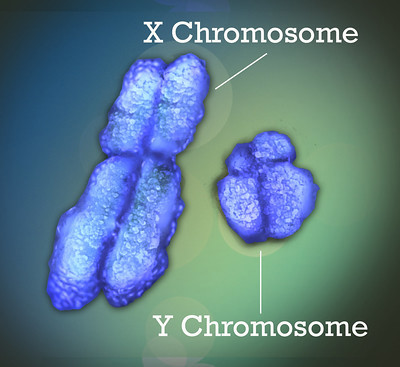
The interesting answer to your question revolves around how similar siblings are if we ignore the Y. Then two sisters will still usually have more DNA in common than a brother and a sister. But not always.
To see why this is, we first need to understand what makes people different and how DNA is passed down. Then we can see why even if we ignore the Y, sisters are usually more similar at the DNA level than are brothers and sisters.
DNA is Different From Person to Person
DNA is really like a written language made up of four different letters -- A, G, T, and C. Humans have around 6 billion of these letters all arranged in a certain order.
One big part of what makes you different from me is that every 1000 nucleotides or so, I have a different letter from you. In other words, we differ at around 6 million places.
As you are more related to someone, the number of different letters goes down. This has to do with the fact that DNA is passed down from generation to generation.
For example, an unrelated mom and dad have around 6 million DNA differences. When they have a child, they each pass half their DNA. This means that they will have only 3 million differences with their child (the half they didn't pass down).
You might think from this that any brothers or sisters would share 3 million differences with each other too. And on average, you'd be right. But in specific cases, brothers and sisters might have greater or fewer differences with each other.
The reason has to do with the fact that our DNA comes packaged in chromosomes. And that the chromosomes we get from our parents are not the same ones that our parents have.
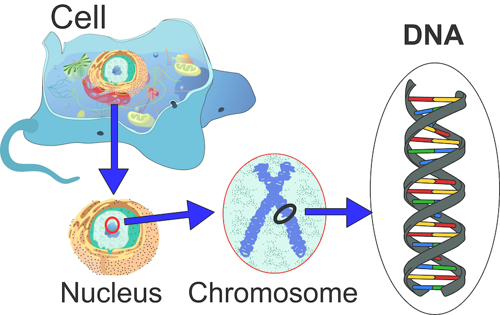
Mixing and Matching Chromosomes
Human DNA is packaged into 23 pairs of chromosomes for a total of 46. One set of 23 comes from mom and the other set of 23 from dad.
This also means that chromosomes come in pairs. So we have a pair of chromosome 1's, a pair of chromosome 2's, etc.
Parents pass one of each pair to their kids. But the chromosome passed on isn't really one of the ones already there. Instead, it is a mix of the pair of them.
Before our chromosomes are put into either the sperm or the egg, something called recombination happens. Basically, the two chromosomes in a pair swap DNA with each other. The end result is a unique chromosome.
Let me show you a diagram to help explain what happens. I'll start out with just one pair of chromosomes from one parent to show how it works. Here are a pair of mom's chromosomes:
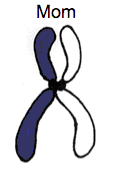
One chromosome is black and the other is white. They are connected by the little bowtie thing in the middle. Now here is a possible combination when the two chromosomes swap DNA with each other and then split apart:

As you can see, neither of these chromosomes is the same as the original. Each is a hybrid of the parent's two chromosomes.
One of these chromosomes gets put into the egg. And becomes one of the egg's 23 different chromosomes.
This is true for most of our chromosomes. The exception is the X and Y chromosomes in males. Neither of these chromosomes recombine which is why sisters tend to be more alike than brothers and sisters.
Sisters Are More Alike Because They Share Dad's X Chromosome
As I said before, all people have 46 chromosomes. But boys and girls do not have the same set.
They both have 2 copies of each of the first 22 chromosomes but they differ in the final pair. Boys have an X and a Y, and girls have 2 X chromosomes.
As you might have guessed from what I wrote already, for recombination to happen, the two chromosomes have to be pretty similar. This is why DNA swapping routinely happens only between two matched pairs.
So, recombination can happen between the two X chromosomes in a mom but only at the tips of the X and the Y in a dad (the X and the Y are similar at the tips). This means that each girl gets a nearly identical X from dad. Since mom's two X chromosomes can recombine, her sons and daughters will each get a mixed X from her.
A brother and sister, then, would have about 50% of their maternal X DNA in common. The same is true for sisters. But sisters have another whole X from dad that's almost exactly the same.
Of course, this is just one chromosome that is only about 5% of the total amount of DNA. If a brother and a sister happen to share more than 55% of their DNA, then they will be more closely related than two sisters. The next section will deal with how this might happen.
Recombination Can Make a Brother and a Sister More than 55% Related
Let's do a couple of recombination examples to show how a brother and a sister might end up more alike than two sisters.
Let's say these are two pairs of chromosomes from mom and dad:
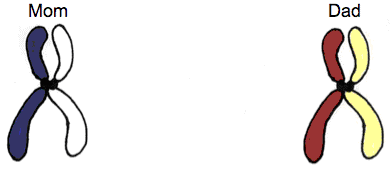
Now let's have them each go through recombination and produce four different chromosomes. (Click here for why we end up with four):
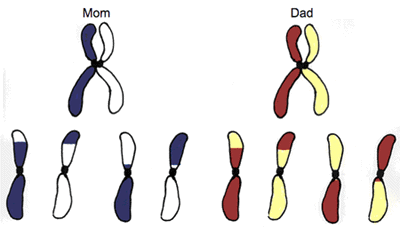
Different pairings of these chromosomes are passed on to three kids (Bob, Sue, and Jane):

As you can see, none of the three have the exact same chromosome. But Jane and Sue don't share any of the same DNA while Bob shares DNA with both Jane and Sue. In this case, Bob is more similar to his sisters than they are to each other.
Now I've rigged this example so that Bob is more similar to Jane and Sue than they are to each other. But in reality, two sisters tend to share more DNA.
As I said before, one reason is that sisters share an identical X. But the other reason is that all of this DNA mixing tends to average out to about 50%.
Think about recombination like a coin toss. Remember when you flip a coin, 50% of the time it will be heads and 50% of the time it will be tails.
Our rigged example is like a few coin tosses. With just a few coin flips, you can pretty easily end up with all heads or all tails. And so Bob can end up more similar to Jane and Sue than they are to each other.
But if you flip a coin a lot of times, then you tend to get half heads and half tails. Same thing with recombination. As more swaps happen with more chromosomes, you tend to get around 50% shared DNA.
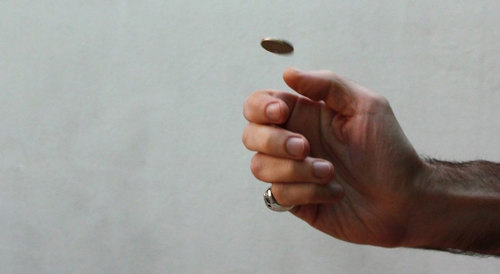

Many DNA swaps means siblings are each about 50% related if we ignore the X and the Y.
Remember, the X is about 5% of total DNA, so that's the amount that will tip the balance. (Of course we're still ignoring the Y.) If the DNA shared by Bob and Sue is more than what's in the X chromosome, they will have more DNA in common than Sue and Jane.
But this would be rare because there are so many swaps between chromosomes. It is like flipping coins 44 times. Odds are that you are going to get pretty close to half heads and half tails with that many flips.
Same thing with recombination. About 35-45 recombinations happen in women's DNA and around 25-30 in men's. This leads to lots of chromosome mixing. Mixing lowers the chances of siblings inheriting the same big chunks of DNA.
So on average, two siblings will share about 50% of their DNA. In rare cases where a brother and a sister share more than 50%, they will be more similar than two sisters.

Author: Mandi Hartman
When this answer was published in 2009, Mandi was a Ph.D. candidate in the Department of Biochemistry, studying cell biology of drosophila myosin VI in Jim Spudich's laboratory. Mandi wrote this answer while participating in the Stanford at The Tech program.
 Skip Navigation
Skip Navigation
